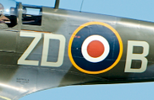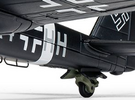Mr. Color Levelling Thinner.
I've used alcohol (90+%) when I do super-light (80-20%) mixes, used X20A (?) until the bottle ran out, but sorta settled on the MLT.
I do think part of my problem is the thin coats, but it lays so nice!
By "80-20%" do you mean 80% thinner to 20% paint? That's really thin, and at least part of the problem. There is so little paint that it cannot cure properly, even with the retarder.
I use 90% isopropyl alcohol with Tamiya Acrylic Retarder. I've
heard and read that Mr. Color Leveling Thinner is compatible with Tamiya acrylics, but it is a different brand, so that may be questionable. I do know that 90% isopropyl alcohol is compatible with them.
The dilution I use is 50%—1 part paint to 1 part thinner, and up to 10% retarder. I vary the amount of retarder depending on current temperature and humidity. Higher temperature and/or low humidity means more retarder. Sometimes I do a test spray, and if I think the paint is curing too fast, I'll add more retarder. If it's drying to fast, I'll add a little more alcohol.
There is a difference between "drying" and "curing." True lacquers dry, they don't cure. Polymeric paint dries and cures. Drying begins as soon as the paint comes in contact with air. Curing starts when the amount of solvent in the paint mixture becomes low enough for the polymer (the film-forming part of the paint) to begin to cross link, forming a network.
(side note) Many think, mistakenly, that Tamiya acrylics are lacquers. This is because they use alcohol as their primary solvent, as many lacquers do. Further, Tamiya acrylics, once dried and cured, can be redissolved by application of an alcohol solvent. However, close observation of the resulting liquid reveals that the coating has disintegrated rather than dissolved.
Because their primary solvent is alcohol, Tamiya acrylics dry very rapidly, especially when airbrushed. This means that the paint can start to cure before it reaches the surface being painted. When that happens too much, you get an "orange peal" surface. When it is extreme, you get a dusty surface. To a certain extent, adding more solvent can help this, but a better solution is using a retarder. MLT contains a retarder, but it may not be quite the same as the Tamiya retarder, and may not behave in quite the same way. Retarders tend to be specific to certain kinds of polymers, so there could be a mismatch between Tamiya and Gunze products, even though they are similar.
Tamiya and Gunze acrylics are more tolerant of surface contamination than water solvent acrylics because they use alcohol as a solvent, and alcohols can dissolve skin oil, though not as well as other hydrocarbon solvents. For this reason, I always clean the plastic surface with alcohol before painting.
Hope all this helps


